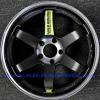Size Does Matter
Announcements
-
Similar Content
-
Latest Posts
-
To plug the hole. The engine plant may not have known whether the car it was going into had a gauge or not. It was a long time ago and the integrations might not have been fully modern. Or they might not have cared because the extra inventory and processes to save a few cents on the sender might have cost more anyway. But please tell me you are not still confusing the idea of a pressure gauge sender, and an oil pressure light switch. The switch will be out there. In a separate hole. Probably with only one wire running to it. Running the light.
-
Blower needs to go low on the exhaust side, displacing the AC and PS, which you have to decide whether you want to keep and how and where to relocate if you do. Electric option for PS is, at least, helpful. Sadly, there is no workable 12V electric AC of any value. Whilst the blower is the last compression step before the throttle, and so it might seem a good idea to have it near the inlet manifold (as mentioned above), you probably want it to go through an intercooler first, so, having it on the opposite side of the car facilitates that air flow path. The turbo discharges into the blower, so proximity of the turbo's compressor outlet to the blower's inlet is nice. But then you might want to intercool that too, before boosting it again....which would probably be a ball ache. Routing pipes out to the front and back could be a bit shit. If there was room for (at least) a small (but preferably larger) water to air core on that side, then that would probably be the best approach. I guess a reasonable alternative would be to locate the blower where the alternator is (more or less, associated with the inlet manifold, per Matt's thought), and somehow incorporate a water to air core into the manifold, sort of like they do for modern blown V8s. The big difference here though is that those V8s have only the one throttle (upstream the blower) and only the one compression step (the blower) and no need for too much in the way of bypass/blowoff valves. Whereas in a twin charged 6, you do need to think about one or two bypass valves associated with the 2 compressors and you would prefer to have the intercooling done before the air has to pass through the throttle. You'd like the throttle to work approx the same no matter what the compression is doing. But if it is located in hot air stream before a cooler, then sometimes the air will be real hot, sometimes it will be quite cool, and the throttle mapping/response will be quite different between those two cases. The throttle, if sized for hot air, would be too large for cold conditions. It's all a ball ache.
-
Package SC on exhaust side. Remote mount turbo. Still a fair bit of room when you get creative on the inlet side of the motor too. Especially if you can get really creative with the welding, and effectively build it into the bottom of the inlet manifold. Would definitely take some design work, and some trial and error, to make sure flow works well still! Might be easier to just start with the Nissan March though... All the work is already done for you...
-
The factory oil pressure sender is no longer in the car that's what is confusing me. In the Taarks adapter I have an aftermarket Bosch style pressure/temp sender and the factory temp sender only. Oil pressure is perfect. Where does the factory oil temp sender go to if there were never any gauges? Why was it there from the factory?
-







Recommended Posts
Create an account or sign in to comment
You need to be a member in order to leave a comment
Create an account
Sign up for a new account in our community. It's easy!
Register a new accountSign in
Already have an account? Sign in here.
Sign In Now